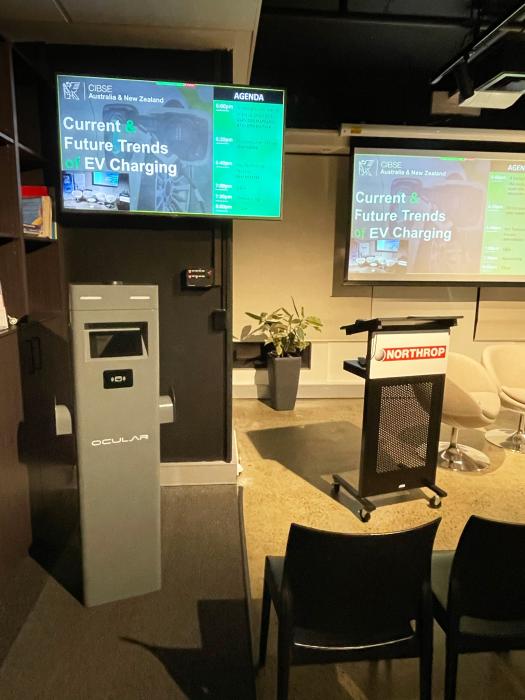Are we ready for the EVolution?




By 2030, 70-80% of the global car market will comprise of EVs (it is currently 5% globally and only 2% in Australia).
Demand of EVs in Australia is expected to skyrocket, with a predicted 9 out of 10 car sales to be electric vehicles by 2030, under the new Labor Government plans.
So, what is our EV consumer market looking for in charging stations, and what key factors should construction professionals consider for this technology?
Northrop hosted members from Chartered Institution of Building Services Engineers (CIBSE) ANZ Region, to talk about The Current and Future Trends of Electric Vehicle Charging. Northrop’s thought leaders Alan Margaris, Ian Van Eerden and Brandon Shutlar, and EVSE co-founder Sam Korkees, led the discussion.
Key to success – some considerations for the construction industry
Here are some key insights from the topics we discussed, or you can watch the technical session.
- While public EV charging networks are being developed, the key to successful EV uptake in Australia will be heavily influenced by convenience. Parking spaces, be it residential or commercial, must have EV charging facilities in the near future (think 5-7 years).
- Governments across the world, and most importantly, local NSW councils are promptly rolling out more aware and stringent policies to support electric vehicles.
- To future-proof designs, designers of EV systems will need to move towards incorporating at least type 2 EV charging stations.
- Construction professionals need to increase their awareness of developments, legislation, incentives and innovations in this space and start informing their clients and designs.
- Research is underway on charging EVs on solar generated power instead of sending the excess solar power to the grid: V2G (Vehicle to Grid) technology - EVs can contribute their unused charged electricity when the vehicle is dormant, usually later hours in the evening, to supply electricity to the electrical network. The user then gets paid money for giving electricity back to the grid during peak hours. V2H (Vehicle to Home) technology - similar to the above, except the unused EV power can power your home, instead of using paid electricity during peak hours from your provider. There are some promising results on cost and energy efficiency on V2G and V2H models. We might see this being a real-life solution in as little as the next 4-5 years.
- Keep an eye on smart metering and load management technology! There are exciting developments in this technology which will allow better flexibility for users and service providers.
Time is of the essence!
The ambition is to move towards 80% clean electricity generation in Australia by 2030 but even while using 'dirty power' EVs will still produce 20% less emissions overall. The time for rapid change is now.
Find out more on planning for electric vehicles
Watch the technical session or contact:
Northrop:
- Alan Margaris, Associate, Electrical Engineer
- Brandon Shutlar, Electrical Engineer
- Ian Van Eerden, Principal, Sustainability Consultant
- Read about our work with NRMA
EVSE Australia:
- Sam Korkees, Co-Founder at EVSE Australia




